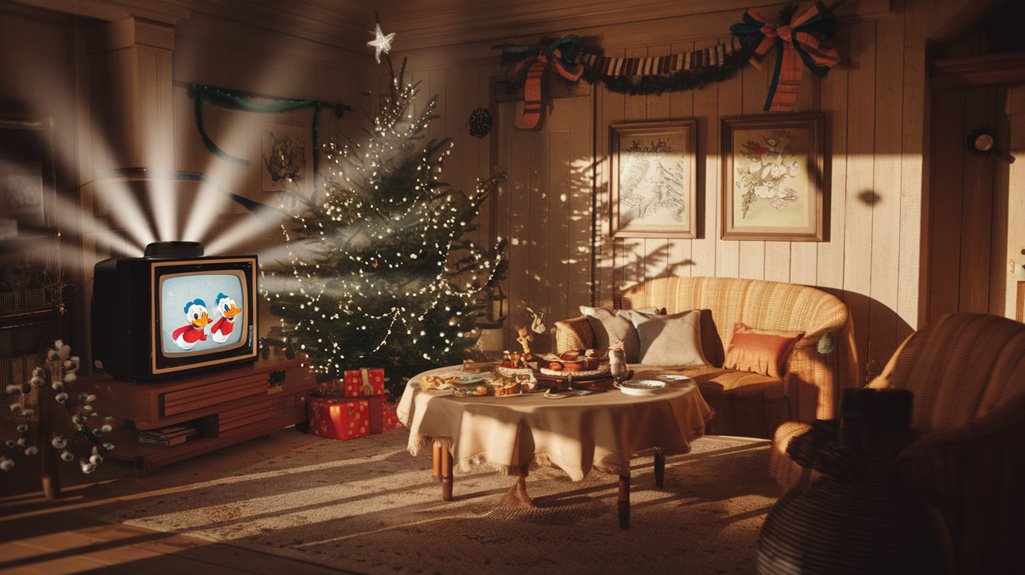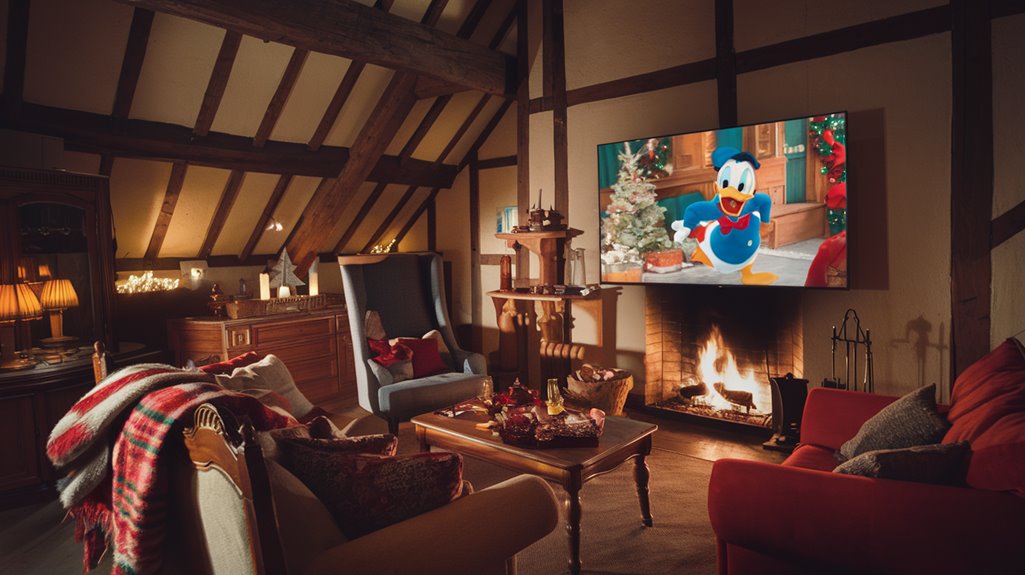Watching Donald Duck on Christmas Eve Is a Swedish Tradition
You might find it surprising that Sweden's most-watched television program isn't a contemporary reality show or sporting event—it's a 1950s Disney Christmas special featuring Donald Duck. Every December 24th at precisely 3 PM, millions of Swedes pause their holiday preparations to gather around their televisions for "Kalle Anka och hans vänner." This cherished ritual, spanning over six decades, has transformed a collection of vintage cartoons into something far more meaningful in Swedish culture.
The Origins of Sweden's Most Beloved Christmas Special

While many countries have their unique holiday traditions, Sweden's most cherished Christmas ritual began in 1959 when SVT1 first aired "Kalle Anka och hans vänner önskar God Jul" (Donald Duck and His Friends Wish You a Merry Christmas).
The historical significance of this special can't be understated. At a time when Sweden had only two TV channels, this Disney program offered a rare glimpse into the magical world of animation. The show is hosted by someone portraying Walt Disney.
You'll find the same format today that captivated viewers decades ago, complete with beloved shorts like "Santa's Workshop" and scenes from classic films such as "Snow White." Each year, the special includes a new Disney film snippet to keep the tradition fresh while maintaining its classic appeal.
The festive nostalgia runs so deep that when SVT1 attempted to cancel the show in the 1970s, public outcry kept it on air.
Even today, you'll catch about 40% of Sweden's population tuning in at precisely 3:05 p.m. every Christmas Eve.
How "Kalle Anka" Became a National Phenomenon
Several unique factors combined to elevate "Kalle Anka" from a simple holiday broadcast to Sweden's most anticipated Christmas tradition.
With only two TV channels available in the early years, Disney content became a rare and precious commodity for Swedish viewers. The show's consistent annual broadcast at 3 PM on Christmas Eve, coupled with Arne Weise's familiar hosting, created a reliable ritual that families could plan their celebrations around.
Kalle Anka's nostalgia continues to draw remarkable annual viewership, with 40% of Sweden's population tuning in each year. The special brings together families and generations as they gather around their televisions to share in this cherished viewing experience. Though recent years have shown declining viewership trends, the program maintains its status as a cultural phenomenon.
Even in today's digital age, the program's cultural impact is so profound that mobile data usage noticeably drops during the broadcast. The special's Swedish dubbing and subtitles have made it more accessible, helping cement Donald Duck as Sweden's beloved Christmas icon.
The Cultural Impact on Swedish Society
Since its inception in 1959, "Kalle Anka" has transformed into more than just a television program – it's become a defining element of Swedish cultural identity.
You'll find this cultural nostalgia deeply woven into the fabric of Swedish society, where families plan their entire Christmas Eve around the 3 p.m. broadcast. With approximately 3 million Swedish viewers watching every year, it's clear this tradition holds immense cultural significance.
The show's impact on Swedish society is evident through:
- A remarkable 40% of the population tunes in annually, creating a shared national experience
- Family bonding occurs as multiple generations gather to watch together
- The broadcast can reduce cellphone data usage by 28%, showing how it commands attention
- Public resistance to changes in the program demonstrates its role as a treasured tradition
This collective viewing experience continues to unite Swedes, transcending age gaps and modern distractions. The tradition is so deeply ingrained that when Ferdinand the Bull was replaced by The Ugly Duckling in 1982, it caused significant public outcry.
A Family Gathering Like No Other
Every Christmas Eve at precisely 3 p.m., Swedish families drop everything to gather around their televisions for "Kalle Anka och hans vänner önskar God Jul."
This cherished tradition unites roughly 40% of Sweden's population, making it one of the most extraordinary family gatherings in modern culture.
The beloved program was made even more special through the years by Arne Weise's hosting, as he soberly introduced the show while lighting a candle.
You'll find Swedish households planning their entire Christmas celebrations around this broadcast, creating powerful moments of holiday bonding that span generations.
The show's unchanging format triggers waves of family nostalgia, as parents share childhood memories of watching the same beloved cartoons with their own children.
The dedication to this tradition is so strong that in 2016, cellphone data usage dropped by 28% during the broadcast – proof that families truly disconnect from the outside world to preserve this sacred hour of togetherness.
The Unique Broadcasting Legacy of Donald Duck's Christmas

Back in 1959, Sweden's Christmas Eve television programming changed forever when "From All of Us to All of You" first graced the airwaves at 3 p.m. This broadcasting milestone, known locally as "Kalle Anka," has achieved remarkable viewership numbers that reflect its deep connection to holiday nostalgia.
Consider these fascinating details about the show's legacy:
- It consistently captures 40% of Sweden's viewers, with a record-breaking peak of over half the population in 1997.
- The program's importance is so profound that cellphone data usage dropped 28% during the 2016 broadcast.
- A host channeling Walt Disney presents the special, which must include clips from Disney's latest films.
- It remains Sweden's most-watched program, continuing a tradition from when the country had only two TV channels.
Like all effective content that connects with its audience and purpose, the show's enduring popularity demonstrates how well it understands and serves its viewers' needs.










